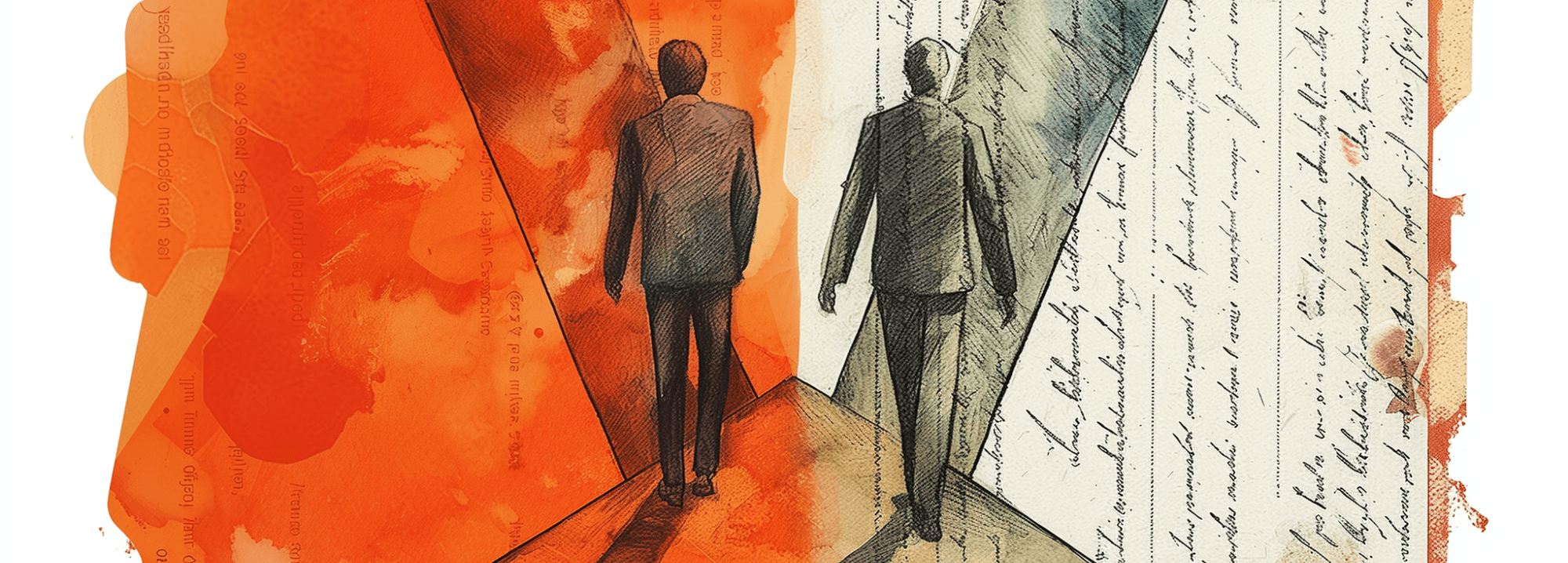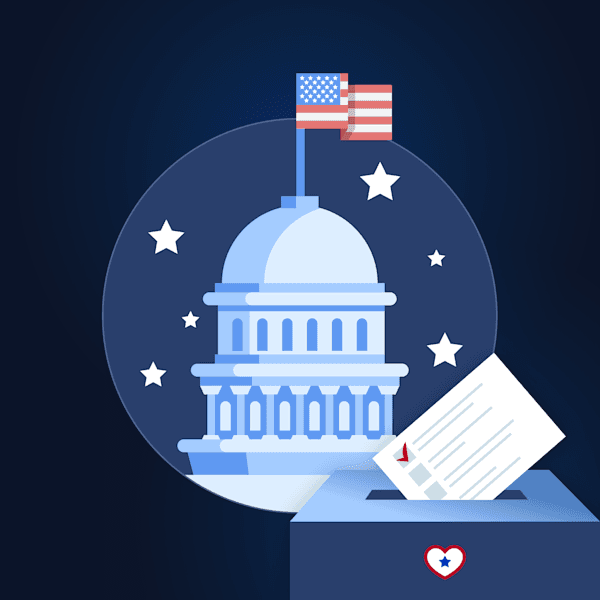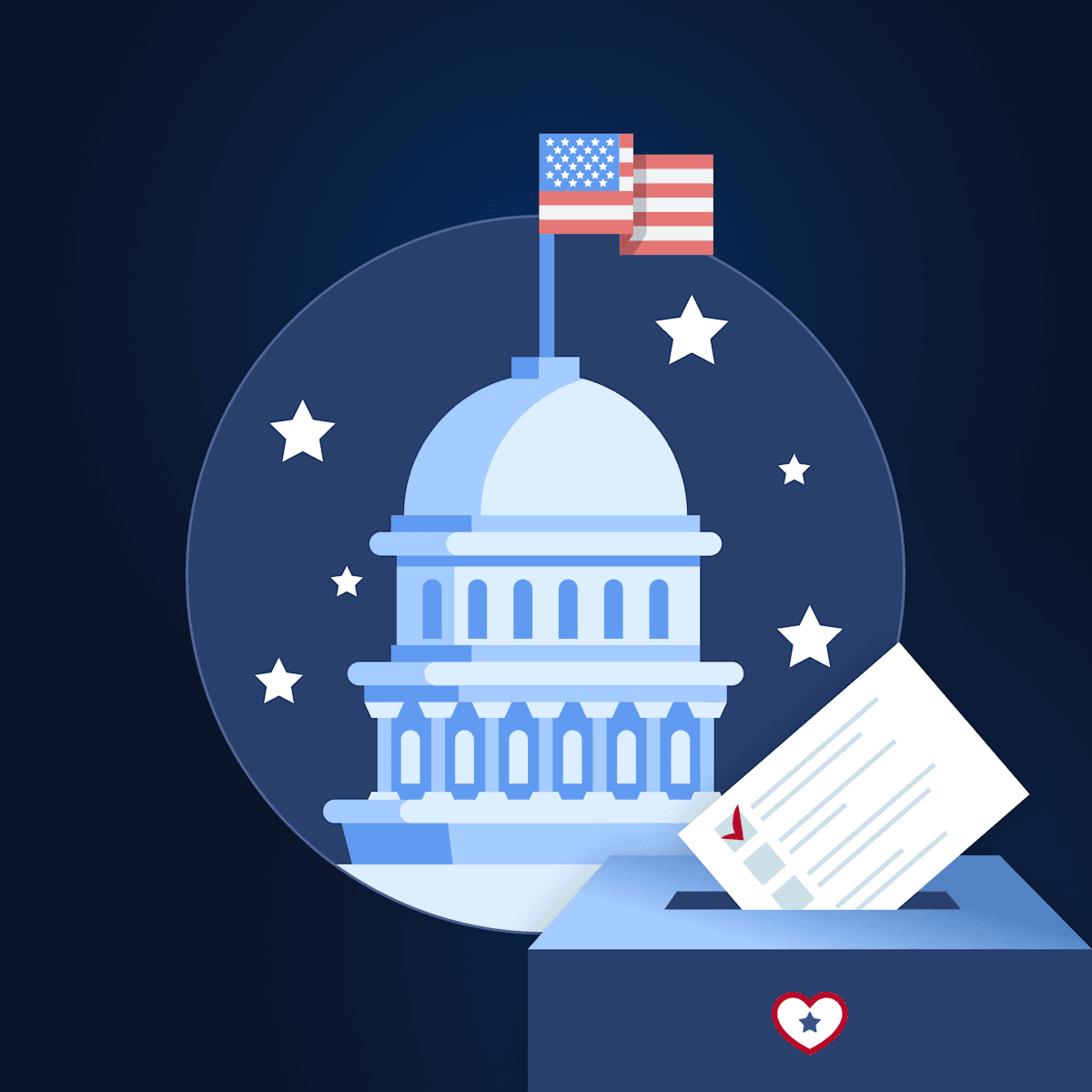
Deepfakes, Cheapfakes, and AI’s Impact on Politics
AI-generated videos are created by the harvesting of actual images, videos, songs and voices to create a very similar (and very fake) reproduction of voice tone, mannerisms and presentation. Considering that a lot of AI generated material is quite compelling, let’s take time to discuss how these materials are impacting our political landscape.
What Are Deepfakes and Cheapfakes?
In a world where generative AI images circulate the internet like wildfire, it is difficult to tell what is real and what isn’t. Despite it being hard to tell the difference sometimes, the consequences could be permanent if fake images, audio and video are mistaken as authentic. Sometimes, identifying AI-generated material is easy. Sometimes, the material is so believable that it goes completely undetected. The best we can do to combat this is to pay close attention and use our resources to identify these things.
Deepfakes are images, videos, and audio that are often high-quality and artificially generated to sound and look like a particular individual. An example of a deep fake would be this AI-generated video of Tom Cruise. While the video has no malicious intent and is not meant to be defamatory to Tom Cruise, deep fake content can negatively affect the person being imitated.

(Maverick-AI, 2024)
Cheapfakes are manipulated images, audio or videos that are photoshopped, recontextualized or manipulated from their original form. These images are often made with very simple editing software and are more accessible to the public. Because they are made with basic technology, these are often easier to spot.
Deepfakes vs. Cheapfakes and Shallowfakes
Deepfakes are often more compelling than cheapfakes or shallowfakes. As deepfakes are often created with more sophisticated AI software or Generative Adversarial Networks (GANs), they typically produce higher-quality artificially generated content. Cheapfakes and shallowfakes traditionally involve basic editing software. Considering that cheapfakes are primarily produced by slowing or accelerating video and audio recording, more advanced software is unnecessary to create them. Additionally, cheapfakes can be much easier to detect, mainly because of the generally lower quality compared to deepfakes.
Examples of Deepfakes and Cheapfakes in Politics
Examples of Deepfakes in Politics

AI-generated image via @Trump_History45 on X (formerly known as Twitter)
The image above was generated to show former President Donald Trump with six African American males to make Donald look more reputable and closer to the Black community.
The circulation of videos showing representatives making inappropriate or insensitive remarks could be the nail in the coffin of any campaign. So, what happens when the comments in question were never made?
A cheapfake may be easier to spot and dismiss, but a compelling deepfake can fool even the most media-literate or tech-savvy people. Deepfakes in politics are not hard to come by, but some of them are particularly unbelievable.
Michigan GOP candidate Anthony Hudson posted a video on TikTok recently with the AI-generated voice of Dr. Martin Luther King, Jr. placing his support behind Hudson. Yes — you read that right. It was an endorsement from a man who was assassinated 56 years ago (8 years before Anthony Hudson was born). As criticism began to flow in, the video was promptly deleted and Hudson released an apology.
Another prominent deepfake in the political realm was released during the 2024 general election. In a now-deleted attempt to smear former President Donald Trump, Never Back Down Inc. PAC in support of former Republican presidential candidate Ron DeSantis, created an attack ad with audio of AI-generated Donald Trump criticizing Republican Kim Reynolds. The tone of the ad was that Trump should be attacking Democrats and not Republicans. The problem is, Trump never audibly said the words featured in the ad.
Examples of Cheapfakes and Shallowfakes in Politics
As cheapfakes or shallowfakes have become more common in political spaces, let’s discuss a few.
In 2019, a video of Nancy Pelosi seemingly fumbling through her sentence was widely circulated among right-wing politicians. Both former President Trump and Rudy Giuliani made public comments on Pelosi’s supposedly slurred and delayed speech. It didn’t take long for the video to be outed as a cheapfake that was deliberately slowed in order to make Pelosi seem in poor health.


Another shallowfake image was one of a former Senate candidate of Pennsylvania, Dr. Oz. The cheapfake shows one of the photographed people cleverly holding a Dr. Oz campaign sign in a manner that reads “NO,” making it seem like the photo opportunity was disingenuous and staged just to make Dr. Oz look foolish, not realizing he was being made fun of. In actuality, after this image was circulated thousands of times, it was confirmed that the image had been doctored (no pun intended) to reflect this.
What Is the Impact of Generative AI on Politics?
As highlighted in this article, many of these doctored videos and images are used to paint Democrats and Republicans in a bad light beyond policy platforms, political beliefs or anything meaningful that should be changing the course of political discussion. Unfortunately, both parties have enjoyed taking small, cheap jabs at one another, despite the blatant manipulation of public opinion.
How Deepfakes and Cheapfakes Impact Political Campaigns
The usage of intentionally manipulated materials in political campaigns can be particularly dangerous considering the timeliness and importance of voters having access to verifiable information. Generative AI material that peddles baseless and defamatory claims could create a lot of trouble for political campaigns and even political parties. These negative impacts can reach more than just the person targeted by the deepfake and can prove to be consequential for the candidate it is meant to support.
Here are a few points to consider:
Disinformation: Spreading disinformation about a candidate could backfire on a campaign. It makes it seem that you have no ability to address active policy concerns from your opponent. Additionally, this content aims to mislead the public with intentionally untrue talking points.
Legal Challenges: While AI smear campaigns can seem like an “easy” way to generate supporters, they can have very real (and even expensive) consequences for those behind the material.
Questionable Ethics: Pushing out baseless smear campaign material to misguide voters is generally regarded as unethical. Additionally, those who are unaware that these baseless points are untrue, may then be put off from pursuing more information about the candidate.
Other Ways Political Campaigns Use Generative AI
In addition to the negative examples described above, there are plenty of positive ways that political campaigns can use generative AI.
Political campaigns can use generative AI that aids in writing captivating campaign materials, writing candidate blurbs and even spell checking materials. AI can also be used for a plethora of other things that are crucial to a political campaign:
Data Analysis and Insights: AI-powered tech tools such as the tools provided by GoodParty.org help collect key insights that track campaigns’ progress on voter outreach.
Advertising: Google and Facebook ads both utilize AI to best identify target audiences that algorithmically should make ad campaigns successful.
Transparency and Accountability: The Federal Election Commission (FEC) uses AI tech to monitor campaign spending. Platforms like OpenSecrets also use AI tools to help track reported campaign funding and spending to increase public awareness and transparency.
Ethical Considerations for Political Candidates
It is completely acceptable to utilize AI to create a stronger campaign. In fact, using AI tools can boost your campaign in powerful ways! However, using AI to intentionally tear down a candidate (or even manmade materials for that matter) is generally distasteful. These attacks often don’t center information that is honest and important for voters to know to make an informed decision.
Additionally, it is worth noting that in our political realm, money has led to rampant corruption and lack of government transparency. It has made running an honest and people-powered campaign extremely difficult to start and maintain. This is one of the reasons that AI-generated materials can be helpful. Due to the unethical nature of our political landscape prioritizing the money of American interests, relying on generative material to supplement a campaign manager could prove to be a strong choice in any political candidate's office.
Free AI Tools for Political Campaigns
There is a growing movement of people independent of the two-party system who rely on AI to enact positive change in their community. GoodParty.org is dedicated to providing independent and third-party candidates with AI-powered tech tools. This is because we understand how critical every moment on the campaign trail can be when fighting to represent your community.
GoodParty.org’s free campaign tools include:
AI Campaign Manager: Our AI Campaign Manager has proven to be a lifesaver for many GoodParty.org Certified candidates. Hundreds of candidates have been able to utilize this tool in their campaigns.
AI Content Templates: Our carefully curated campaign manager can generate press releases, email blasts, social media templates, and more.
Campaign Progress Tracker: Our campaign progress tracker will calculate how many voters you need in order to win and also tangible steps you need to take in order to reach that goal. As you reach your goals, the campaign tracker updates so that you can see your progress!
We also connect you with a community of candidates experiencing similar challenges in running a people-powered campaign.
Closing Remarks and Things To Consider
No one is completely immune to being deceived by well-produced AI-generated content. Propaganda is meant to evoke strong feelings from the person or group that experiences them. Because these generated items can have long-lasting implications, do not be afraid to ask, “is this AI?” when engaging with something that you want further verification on.
It is important to remember this not only during election campaigns but also when consuming media that could negatively or positively impact your opinion of someone or something. Being familiar with how AI-generated materials can evoke strong emotions, be sure to maintain a healthy skepticism of media consumed on social media.

